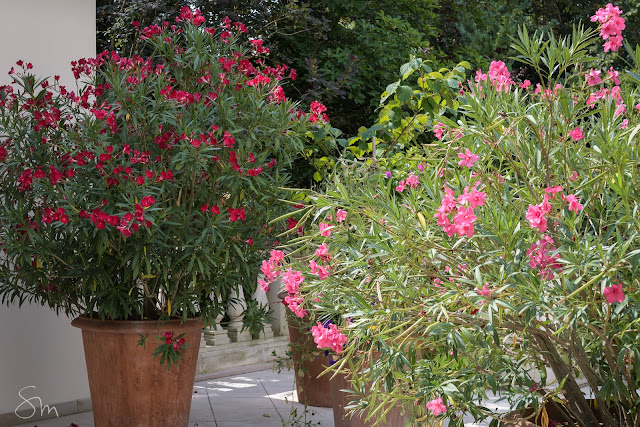A weekend with photographer friends took me to Edersee, a reservoir in the northern parts of Hesse, two hours from Frankfurt. Some people call it "Hessian Kongo" because it is sparsely populated and has been forgotten by industry in the past sixty years, no motorways pass the mainly rural and heavily forested area. It is all the more interesting for tourists - this summer the more so because due to the extremely dry weather here in Germany, the reservoir Edersee is at its lowest level for decades. Villages and bridges usually covered with water are reappearing.
Close-by the "Hutewälder" of Bad Wildungen are photographically interesting. They consist of oak and beech forest with century-old trees where farmers' pigs used to run loose to mast on the fallen acorns and beech-nuts in autumn. We set out to photograph these old characterful trees.
The Dam and reservoir were built around 1910 to provide water to the nearby shipping routes on Mittellandkanal during the summer months. The dam gained sad fame when during WWII the British in 1943 tested a new "rotation bomb" on the dam which tore a huge hole in the wall. The resulting flood wave killed 68 people further downstream and caused a huge destruction in the valley.
The village Berich reappearing
a boat is still cruising
At Asel bridge further upstream the Eder is reduced to a small rivulet.
Close-by the "Hutewälder" of Bad Wildungen are photographically interesting. They consist of oak and beech forest with century-old trees where farmers' pigs used to run loose to mast on the fallen acorns and beech-nuts in autumn. We set out to photograph these old characterful trees.
the innards of an old beech tree
After an early dinner we spent several fun hours in the dark forest with torches and head lights trying the technique of light painting. The camera is fixed on a tripod, with low ISO and a long expore of up to several minutes while a helper shines a torch light at the trunk and whereever you want the image to be exposed. It is a fun experiment and you can never predict how the picture will look. I tried to shape the old gnarled trunks and give them a personality with a "Rubens"-like effect of stark contrasts.
For this image I used a high ISO of 800 and a 25 sec exposure to get a glimpse of the starry sky in the background
in black and white
Here we had planned to give the trunk a silhouette - when the torch inadvertently shone right at the camera, we thought that the exposure had been spoilt. However, this picture has turned out quite perfect! With this technique you never know the result until you see it on your screen.
There is so little light in this area that even the milky way can easily be seen on such clear nights.























































